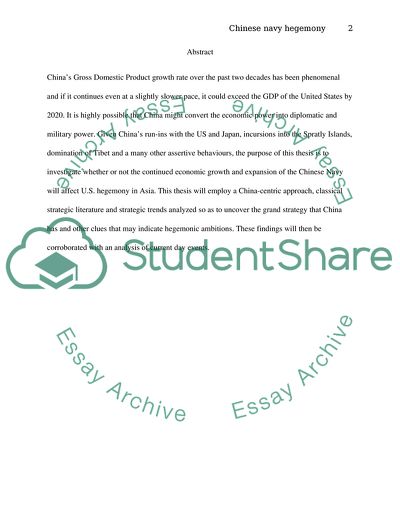Cite this document
(Chinese Navy Expansion and the US Hegemony in Asia Research Proposal, n.d.)
Chinese Navy Expansion and the US Hegemony in Asia Research Proposal. https://studentshare.org/macro-microeconomics/1741966-how-does-the-expansion-of-the-chinese-navy-affect-us-hegemony-in-asia
Chinese Navy Expansion and the US Hegemony in Asia Research Proposal. https://studentshare.org/macro-microeconomics/1741966-how-does-the-expansion-of-the-chinese-navy-affect-us-hegemony-in-asia
(Chinese Navy Expansion and the US Hegemony in Asia Research Proposal)
Chinese Navy Expansion and the US Hegemony in Asia Research Proposal. https://studentshare.org/macro-microeconomics/1741966-how-does-the-expansion-of-the-chinese-navy-affect-us-hegemony-in-asia.
Chinese Navy Expansion and the US Hegemony in Asia Research Proposal. https://studentshare.org/macro-microeconomics/1741966-how-does-the-expansion-of-the-chinese-navy-affect-us-hegemony-in-asia.
“Chinese Navy Expansion and the US Hegemony in Asia Research Proposal”. https://studentshare.org/macro-microeconomics/1741966-how-does-the-expansion-of-the-chinese-navy-affect-us-hegemony-in-asia.


